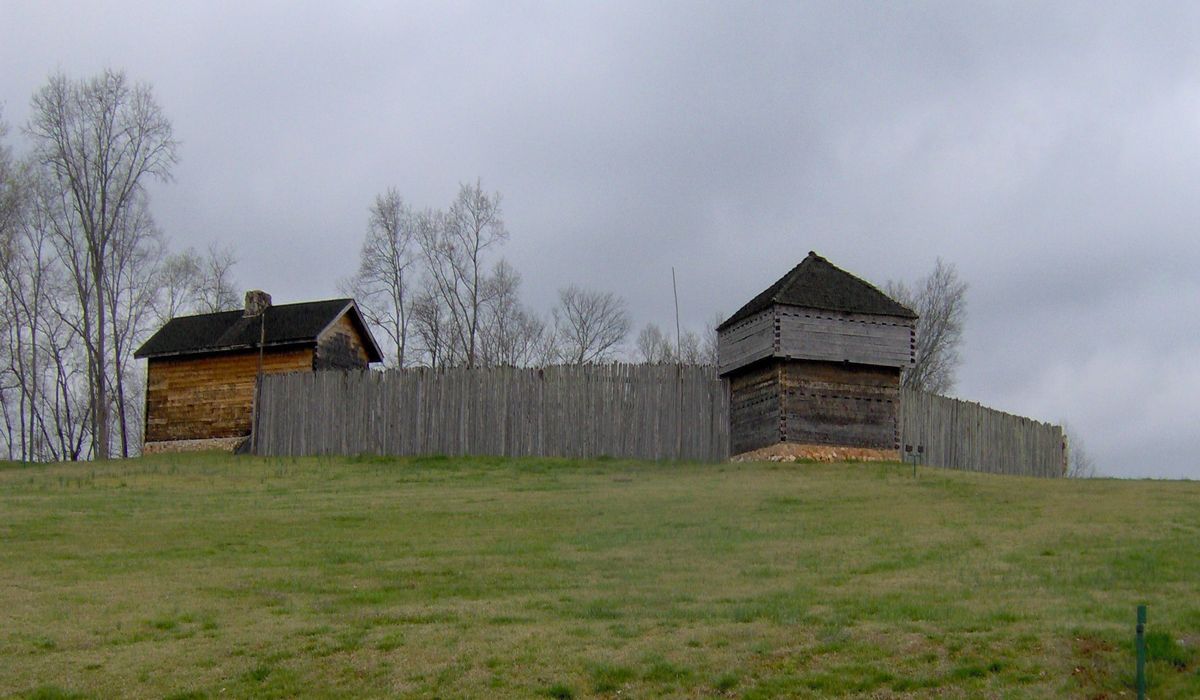Hidden Military Secrets Of Tennessee’s Fort Southwest Point

Have you ever wondered about the hidden military secrets of Tennessee's Fort Southwest Point? This historic site, located in Kingston, holds many untold stories from the past. Built in the late 18th century, it played a crucial role in early American history. Soldiers stationed here protected settlers and maintained peace with Native American tribes. Today, visitors can explore reconstructed buildings, artifacts, and exhibits that bring the past to life. Whether you're a history buff or just curious, Fort Southwest Point offers a unique glimpse into the military strategies and daily lives of those who served there. Ready to uncover its secrets?
Hidden Military Secrets of Tennessee's Fort Southwest Point
Fort Southwest Point, located in Kingston, Tennessee, holds a treasure trove of military secrets. This historic site, established in 1797, played a crucial role in early American frontier defense. Let's uncover some of the hidden military secrets of this fascinating fort.
The Strategic Location
Fort Southwest Point's location was no accident. It was strategically placed to oversee the confluence of the Clinch and Tennessee Rivers, making it a vital point for defense and trade.
- River Surveillance: The fort's position allowed soldiers to monitor river traffic, ensuring control over goods and preventing enemy movements.
- Trade Route Protection: It safeguarded important trade routes, facilitating commerce and communication between settlers and Native American tribes.
- Natural Defense: The surrounding rivers provided a natural barrier against potential attacks, enhancing the fort's defensive capabilities.
The Fort's Construction
The construction of Fort Southwest Point reveals much about the military strategies of the time. Built to withstand attacks and provide a stronghold for soldiers, its design is a testament to early American military engineering.
- Stockade Walls: Tall, sturdy wooden walls surrounded the fort, offering protection against enemy fire and preventing unauthorized entry.
- Blockhouses: These fortified structures at the corners of the fort allowed soldiers to fire upon attackers from a higher vantage point.
- Barracks and Storehouses: Essential for housing troops and storing supplies, these buildings ensured the fort's self-sufficiency during sieges.
The Role in Native American Relations
Fort Southwest Point played a significant role in the complex relationships between American settlers and Native American tribes. Its presence influenced diplomacy, trade, and conflict in the region.
- Diplomatic Meetings: The fort served as a neutral ground for negotiations between settlers and Native American leaders, fostering peace and cooperation.
- Trade Hub: It became a center for trade, where goods were exchanged, and alliances were formed, benefiting both settlers and tribes.
- Military Campaigns: The fort was a launching point for military expeditions against hostile tribes, aiming to secure the frontier for American expansion.
The Soldiers' Daily Life
Life at Fort Southwest Point was challenging for the soldiers stationed there. Understanding their daily routines provides insight into the hardships and responsibilities they faced.
- Guard Duty: Soldiers took turns patrolling the fort's perimeter, ensuring its security day and night.
- Training Drills: Regular drills and exercises kept the troops prepared for potential attacks and honed their combat skills.
- Maintenance Work: Soldiers were responsible for repairing fortifications, maintaining weapons, and ensuring the fort remained in top condition.
The Fort's Legacy
Fort Southwest Point's legacy extends beyond its military significance. It has become a symbol of early American resilience and determination, preserving the history of those who served there.
- Historical Preservation: Efforts to restore and maintain the fort have turned it into a valuable educational resource, offering visitors a glimpse into the past.
- Archaeological Discoveries: Excavations at the site have uncovered artifacts that provide a deeper understanding of the fort's history and the lives of its inhabitants.
- Cultural Impact: The fort's story continues to inspire and educate, reminding us of the challenges and triumphs of America's early frontier days.
The Legacy of Fort Southwest Point
Fort Southwest Point holds a rich history. Built in the late 18th century, it played a key role in early American military strategy. The fort's location near the Tennessee River made it a strategic point for controlling trade routes and protecting settlers. Over the years, it saw various military actions and served as a base for operations during conflicts with Native American tribes.
Today, the fort stands as a testament to the past. Visitors can explore reconstructed buildings, artifacts, and exhibits that bring history to life. The site offers a unique glimpse into the lives of soldiers and settlers who once called it home.
Understanding the fort's history helps us appreciate the complexities of early American frontier life. It reminds us of the challenges faced and the resilience shown by those who lived during that time. Fort Southwest Point remains a significant piece of Tennessee's heritage.

